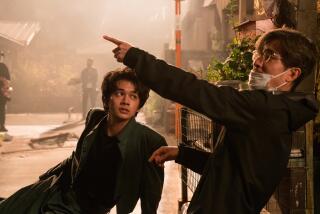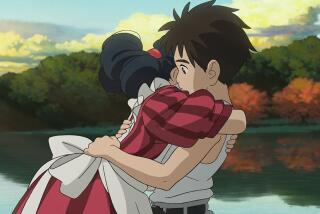What the World’s Watching
- Share via
To the Japanese, America has long seemed a dangerous and violent place. Perhaps that is why Hollywood’s obsession with guns and gore surprises no one here, and why violence is accepted as a key ingredient that makes U.S. movies so popular and profitable in Japan.
In fact, American movies are expected to be violent. “Every major movie has scenes in which people are killed,” said Naoko Kimura, host of a weekly TV program that reviews Western movies.
“The equation ‘movies equals killings’ is normal,” she said. “The only difference is the number of violent scenes.”
Even in the homeland of such film giants as the late directors Akira Kurosawa and Yasujiro Ozu, foreign films are crushing Japanese-made pictures both in quantity and in box-office appeal. Last year, the 249 Japanese-made pictures netted total profits of $220 million while the 307 imported films--152 of them American--racked up profits of $500 million. (That’s the U.S. equivalent of $1.1 billion in box-office receipts.)
American blockbusters tend to be automatic hits in Japan, with “Titanic,” the best-grossing film ever here, earning nearly $131 million. That compares with $94 million for the highest-earning Japanese film ever, the 1997 animated film “Princess Mononoke,” which was, perhaps not coincidentally, a strikingly violent fantasy.
“American movies are the king of kings,” said Hiromichi Kinoshita, editor in chief of Roadshow magazine. Japanese studios simply can’t replicate the thrill of Hollywood’s fabulous effects and equally fabulous production budgets, he said. “Japanese have to pay $15 for a movie ticket, which is quite expensive, and America is delivering them films that are worth the price.”
Thus, even if Hollywood were to curb its blood lust, Japanese studios would not step in to fill the breach, Kinoshita predicted. “If Japanese filmmakers produced such violent movies, no one would go,” he said.
Japan has begun discussing the role that violence on television has played in the recent increase of violent youth crime. For example, a spate of knifings in junior high schools in 1998 was blamed in part on a popular TV program whose hero developed a fatal attraction to butterfly knives. The incidence of copycat teens carrying the knives soared, and police responded by banning their sales to minors.
But so far, calls to restrict violent content on prime-time TV or to introduce V-chips to allow parental censorship have gone nowhere.
However, violence in movies--foreign or domestic--has not become an issue here. To date, Japan’s only response to film violence has been the May 1998 introduction of a PG-12 rating that recommends that children under 12 not view a movie without parental supervision.
Japan’s equanimity toward celluloid carnage stems in part from the fact that in this country, gunfire is easy to dismiss as pure fantasy. Japan’s gun-control laws are so strict that most people have never seen a firearm other than the sheathed pistols carried by police, and shootings, even by gangsters, are extremely rare.
Hisayuki Ui, editor in chief of the movie magazine Screen, agreed. “Even if movies are fun, Japanese are Japanese, so they don’t copy foreign characters in movies,” Ui said. “Violence with [guns] is impossible, as there isn’t any way to get them.”
And while the horror genre is having a resurgence in the land that invented Godzilla, the popularity of yakuza gangster flicks is declining. That may be because the upsurge in crime (though still minuscule by American standards) means that yakuza movies are no longer seen as purely preposterous entertainment, Ui said. Comedy and romance have more appeal to young people these days, though American comedy doesn’t play well here.
But the appetite for action films remains huge. While many Hollywood shoot-’em-ups have recently come to be regarded as stale, Hong Kong action films have become popular here, said Kazuhito Takada, spokesman for United International Pictures Far East, which imports and distributes about 30 major U.S. films a year. Japanese-made action films can’t compete--and most Japanese studios don’t even try, Takada and other industry sources said.
More to Read
The biggest entertainment stories
Get our big stories about Hollywood, film, television, music, arts, culture and more right in your inbox as soon as they publish.
You may occasionally receive promotional content from the Los Angeles Times.










